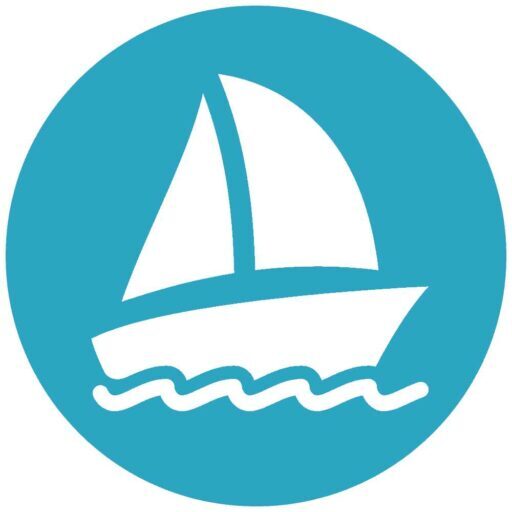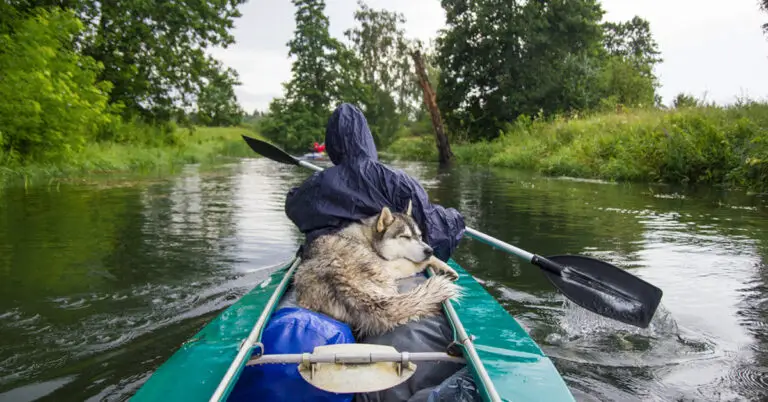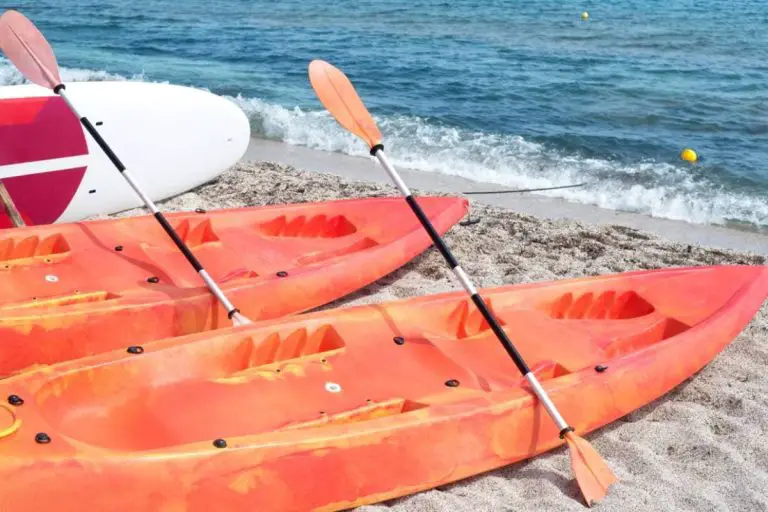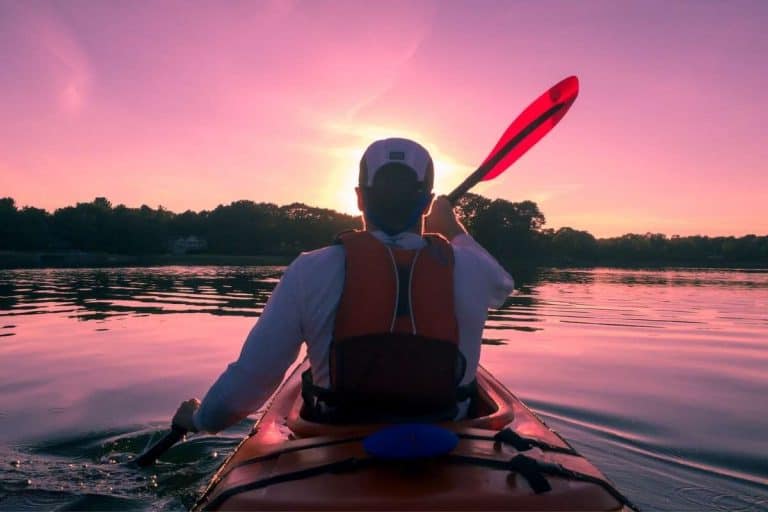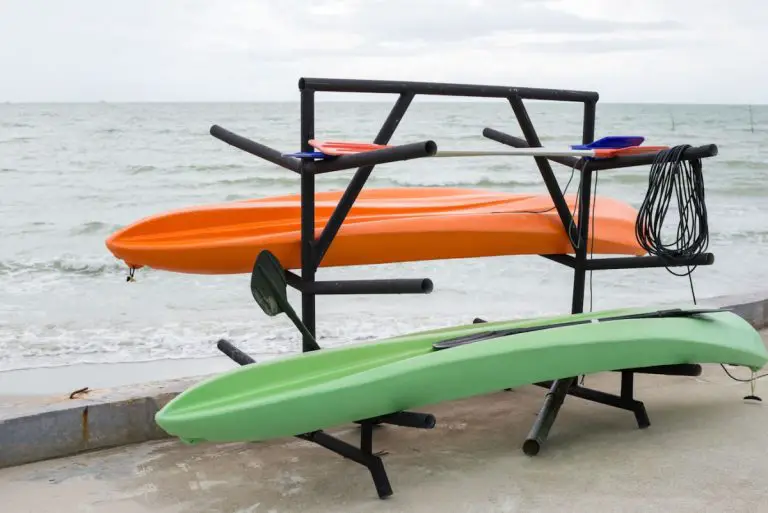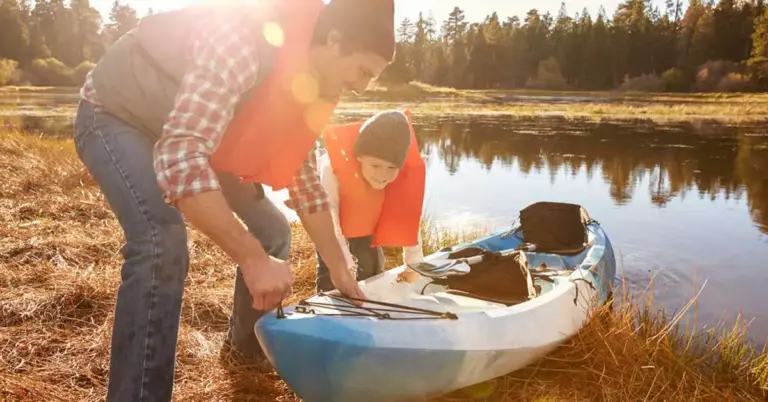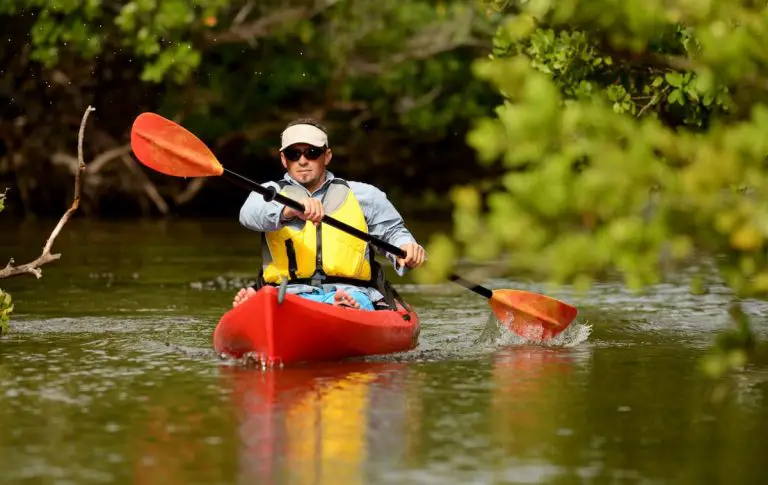9 Ways To Avoid Blisters While Kayaking (Easy Guide)
It is pretty normal for those new to kayaking to get blisters the first few times they hit the water. While I appreciate this can be a painful transition into kayaking, it doesn’t have to be this way forever. Fortunately, it’s easy to avoid blisters from kayaking with these top tips and tricks.
Here are nine tips to help you avoid blisters kayaking:
- Improve the grip on your paddle.
- Prepare your hands with moleskin padding.
- Apply layering over your hands.
- Get some high-quality fingerless sailing gloves.
- Apply topical solutions to ease friction.
- Use rubbing alcohol to toughen up the skin on your hands.
- Try using a hand cream with aloe vera.
- Consider buying a silicone grip.
- Get Yakgrips for your kayak paddle.
In this article, I will shed more light on ways you can avoid blisters when hitting the waters for a kayaking adventure. Ready? Then let’s dive right in.
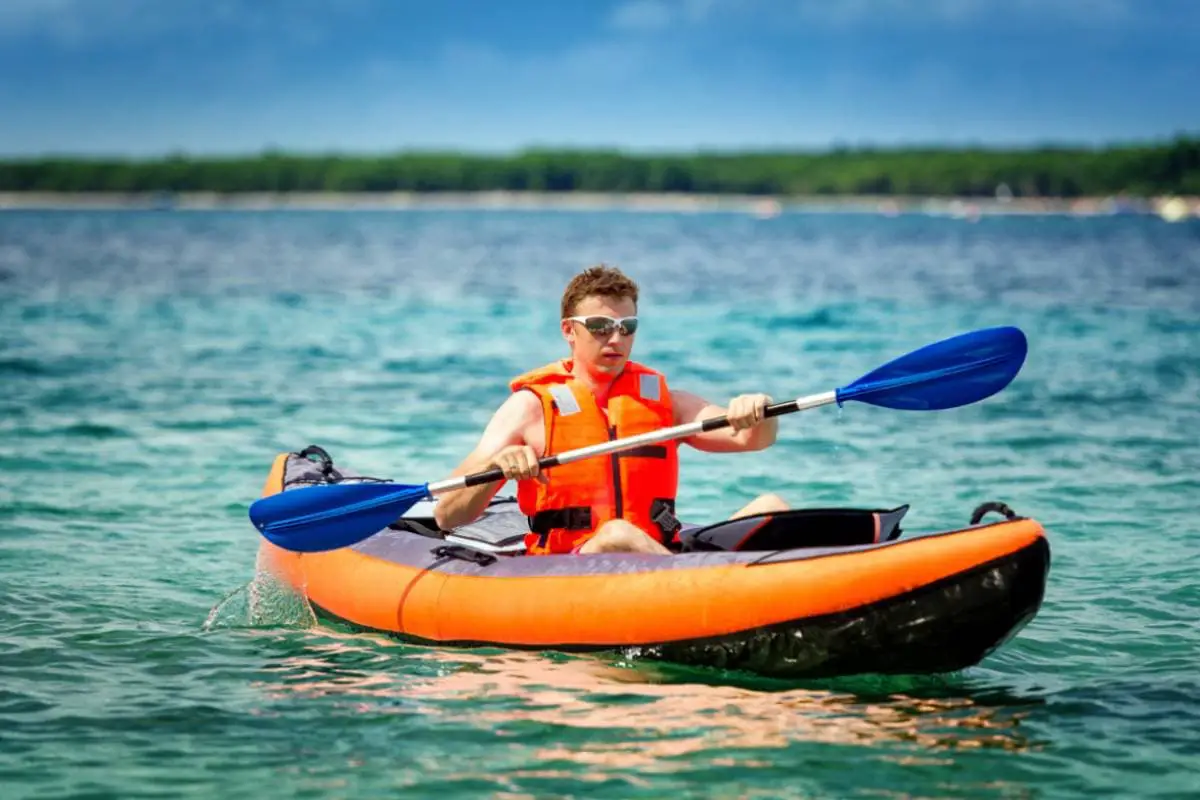
1. Avoid Kayaking Blisters By Improving the Grip on Your Paddle
The grip on your paddle is essential. You want to have a good grip to control the paddling, but you don’t want it to be too tight so that you are gripping too hard and getting blisters.
Ideally, the proper paddle grip for kayakers should be firm but not tough. The less pressure you apply on the paddle the better the outcomes on your hands. A good grip allows you to hold the paddle firmly without the contact harming your hands.
As most kayaking gurus will state, improving paddle grip is one of the best ways to prevent blisters when getting started on the sport.
And by improving your grip, these experts mean loosening it. Far too often, I’ve seen people new to kayaking wanting to show their ‘death grip’ and squeeze the paddle as hard as possible.
I recommend not doing this. Not only does a tightened grip increase the chances of getting blisters, but it also causes your forearms a lot of unnecessary aching and soreness. By applying the ‘death grip’ to your strokes, you take power from your forearms instead of your more powerful abdominals.
Relying on the wrong body parts to power you through kayaking weakens you, and you will find yourself taking more frequent rest breaks because your arms can’t take it.
If you are looking to learn how to hold your paddle correctly, check out this video by Paddling.com:
2. Use Moleskin Padding on Hands to Eliminate Kayaking Blisters
Suffering from kayaking blisters means it’s likely that you’ve found your hotspots! Hotspots are areas of your skin that are prone to inflammation. Hotspots are the most likely places for kayakers to get blisters. And to prevent blisters from forming, you must prepare these areas effectively.
Moleskin padding is a soft cotton fabric that has been used for decades to prevent and heal blisters.
The sticky side helps to cover the affected area and prevent it from coming into contact with the paddle. Moleskins are additionally helpful in preventing chafing during exercising, and can be your bestfriend when training hard for a local tournament.
Although moleskins are traditionally used for the foot, its adhesive side holds up pretty well and will stay put on your hand despite the force you apply when paddling.
If you are trying to prevent blisters, you will place the adhesive side down on the areas of your hand that are likely to get affected. The moleskin will protect the skin underneath the padding, keeping your hands safe, while making things more comfortable while you’re on the water.
If you are looking for moleskin padding, I can recommend this PrimeMed Soft Plush Moleskin from Amazon.com. This particular moleskin comes in a roll, which means you can cut off as much as you need.
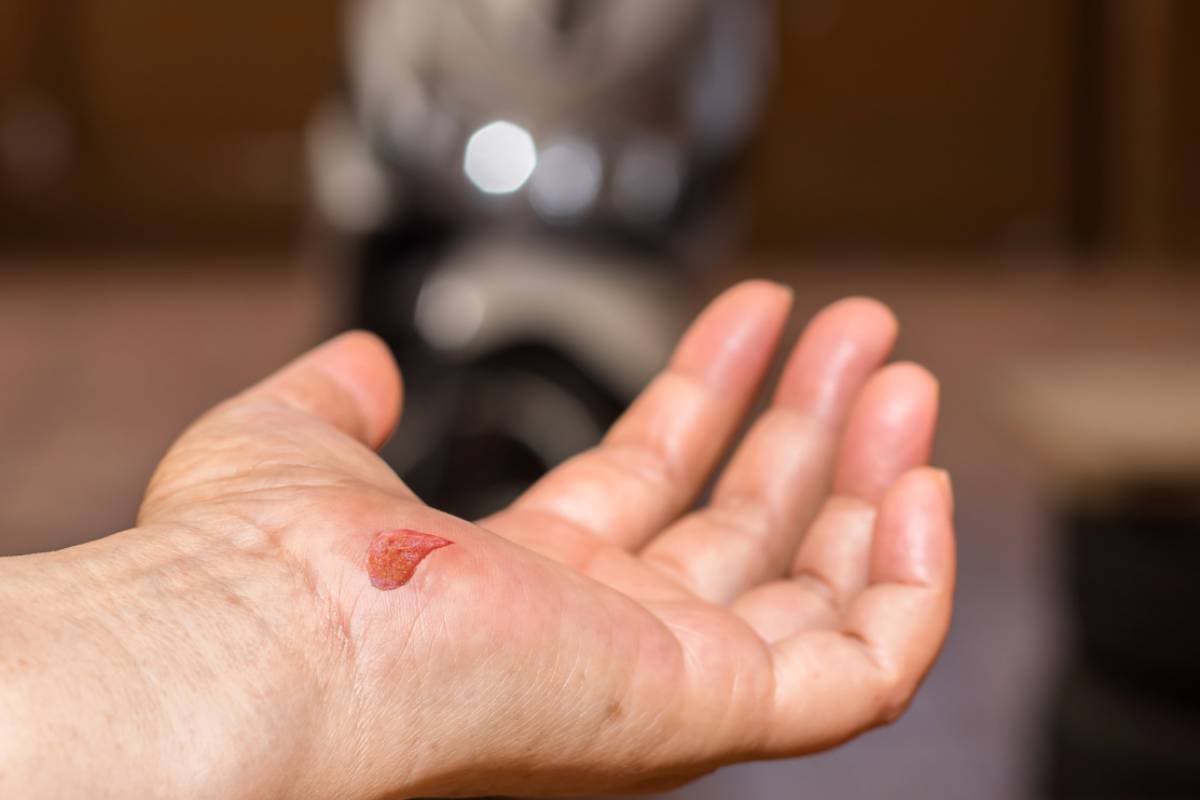
3. Apply Layering Over Your Hands To Prevent Blistering
Applying a layer such as bandages over the top of moleskin padding will provide an extra barrier between your skin and the paddle.
Layering reduces the amount of contact between the paddle and your hand, effectively reducing the chance of blisters.
On most occasions, you’ll find people applying bandages on top of moleskin padding for extra protection. In addition to preventing blisters, the extra application will also prevent skin tears and provide additional comfort, ensuring you enjoy the kayaking ride as much as possible.
A 5 cm (1.96 inch) wide cohesive bandage can also help prevent blisters. Ideally, you should place the bandage lightly on your fingers so as to cover the moleskin padding as too much pressure can lead to swelling.
If you are looking for a 5 cm (1.96 inch) wide cohesive bandage, I can recommend this Ybeauty Bandage Wrap on Amazon.com. The bandage is long-lasting and can be put to multiple uses.
4. Stop Blisters With Some High-Quality Fingerless Sailing Gloves
Waterproof Gloves are the answer for the kayaker looking for a complete solution to hand protection. They are designed to fit snugly and protect your hands from friction while providing enough flexibility to hold your paddle shaft comfortably.
Neoprene Gloves are also another alternative worth considering if you want something that feels like a glove but provides more protection than a standard pair of paddling gloves.
The neoprene material is thick and flexible, but it will not give any added grip on your paddle shaft, which may or may not be an issue depending on how you prefer to grip your paddle when paddling out on the water.
Paddling gloves (also known as pogies) are another great way of preventing blisters from kayaking. The gloves help kayakers with blisters two-fold.
Firstly they are sufficiently padded in the palms, fingers and inner thumb areas that are most susceptible to blisters. They also keep your hands dry and away from excess moisture that you are sure to contact with the water.
Remember to check for loose sand before putting on your gloves. Unwanted sand can hide in the gloves’ fabric and increase the chances of blisters forming.
If you are looking to get some of the best fingerless gloves available, I would recommend a pair of these Palmyth Fingerless Kayaking Gloves from Amazon.com.
These gloves are made from high-quality material that ensures they withstand the rigors of paddling. The fabric is breathable, meaning that your hands will not become too hot and sweaty as you continue to paddle.
It’s important to wear gloves when kayaking, especially during the first few weeks as you work on improving your grip. An extremely stiff grip will increase the chances of blisters, but high quality kayaking gloves will provide additional protection to the contact points by reducing overall friction.
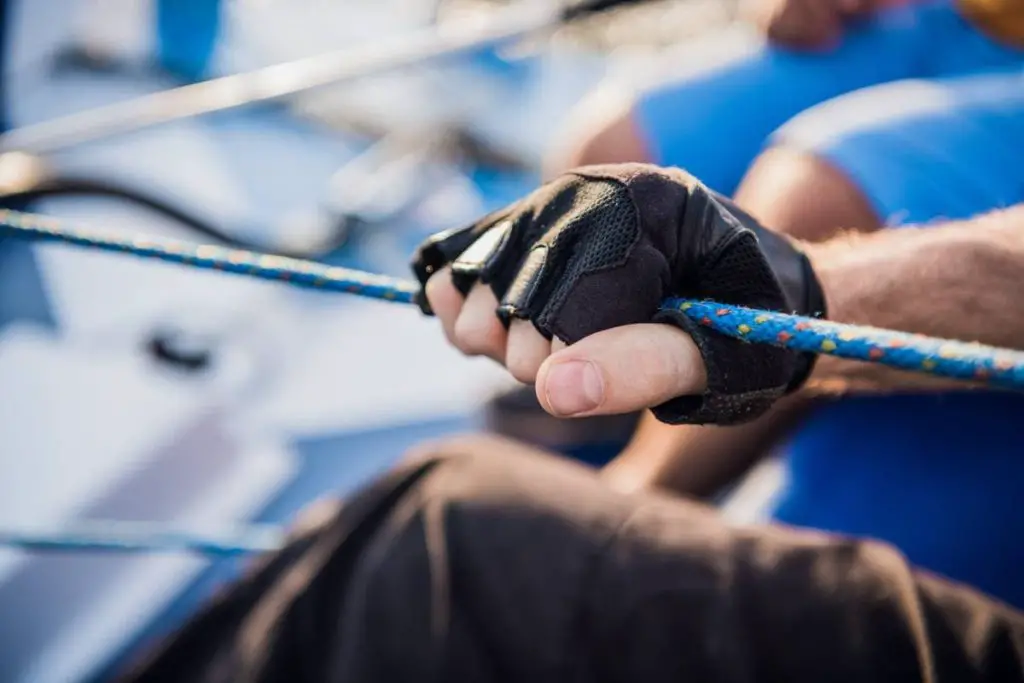
5. Apply Topical Solutions To Ease Friction and Blisters
Applying a topical solution, such as a lubricant, is an excellent way to protect your hands from blisters while kayaking.
Some of the best topical solutions to use are:
- Desitin: Desitin is a branded version of zinc oxide paste. This is an excellent solution for sensitive skin and can be applied as often as required.
- Bag balm: This is another popular option for kayakers and works well with both dry and wet friction areas. It also works well for preventing chafing in other areas of the body, such as elbows, knees, or ankles. It is also available in an extra-strength version containing lanolin, which helps heal existing blisters while preventing new ones from forming.
- Petroleum jelly: Petroleum jelly is an old and trusted favorite that has been used by generations of kayakers to protect their hands from blisters and chafing. Over time, it will build up a layer of protection that helps reduce friction and stops new blisters from forming.
- Coconut oil: This is another option for those who prefer using natural remedies to reduce the impact of hand friction when kayaking. You can apply coconut oil as frequently as needed.
6. Use Rubbing Alcohol To Toughen Up the Skin on Your Hands
Rubbing alcohol is an excellent option for preventing blisters on your hands while kayaking. It works by drying out your hands and making the skin thicker and less sensitive to chafing and friction.
Not only does rubbing alcohol prevent blisters from forming but it also reduces the chances of blisters worsening, if you already have some.
You can apply rubbing alcohol on your hands before you start paddling, as this will help prevent chafing. Rubbing alcohol also makes it easier to treat existing friction areas that may already be causing some pain.
Use a cotton pad or ball to apply a few drops of rubbing alcohol to the contact areas where you are likely to develop blisters.
Allow the alcohol to dry naturally before getting back into the paddling position and kickstart your kayaking adventure. You can repeat this process as often as required but avoid getting it into your eyes or nose as this will sting!
If you are looking for rubbing alcohol, I can recommend Solimo Isopropyl Alcohol on Amazon.com. This product is highly effective in drying the skin and is the perfect strength for this type of use.
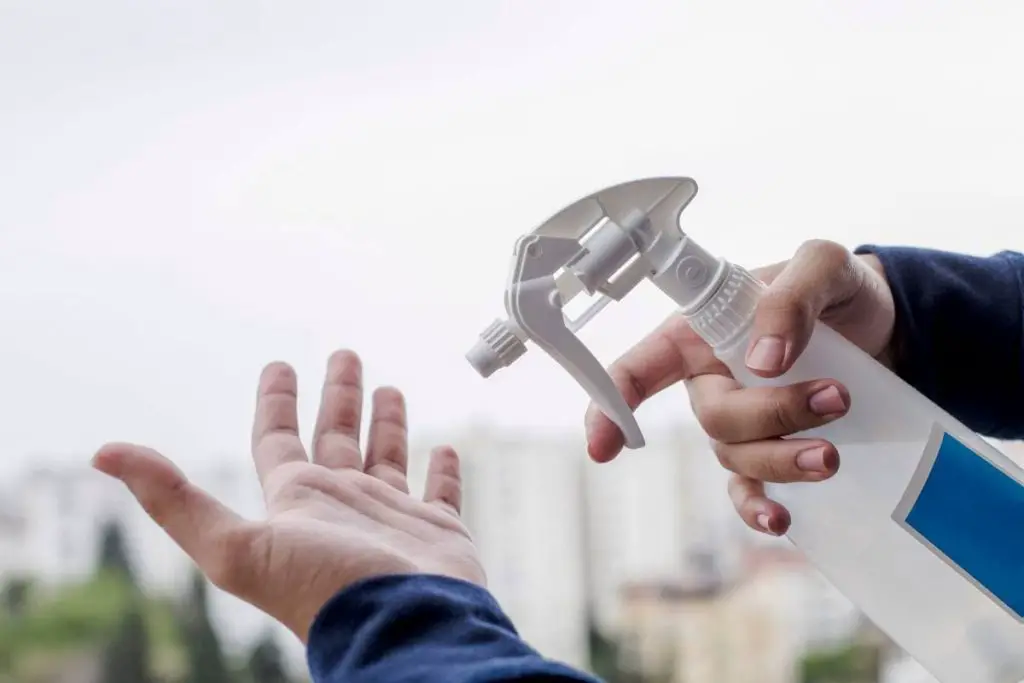
7. Try Using a Hand Cream With Aloe Vera
Aloe Vera is a natural ingredient found in many hand creams and lotions. It helps to soothe dry, chapped, or damaged skin, meaning it can make your skin less prone to blisters due to friction.
The popular plant has been used medicinally for over 3,000 years and can be found in most skin care products from moisturizers to sunscreens and even lip balms.
Aloe Vera promotes healthy hydration of the body’s cellular levels, which reduces the overall risk of dryness or irritation due to environmental factors such as cold weather conditions or extreme heat.
If you want an aloe vera product for your hands, consider using a product like Beaueli Aloe Vera Gel (available on amazon.com). This product has been specifically designed for use on hands and contains no perfumes or colorants that can irritate sensitive skin.
When buying hand creams and skin care products, it is advisable to buy from trusted retailers, especially if you have sensitive skin.
8. Consider Buying Silicone Paddle Grips
A silicone paddle grip can help prevent friction blisters from forming when kayaking as they add an extra protective layer of material on the shaft. The silicone paddle grip allows for a more comfortable handhold on the paddle and helps to reduce rubbing which causes blisters
These grips have been designed to reduce the amount of friction between your hand and the paddle as you kayak.
These grips are made from silicone material and come in different shapes and sizes, so you’ll need to find one that fits your hand comfortably and provides the right level of grip for you.
The Ayaport Kayak Paddle Grips (Amazon) are relatively simple to install on your paddle and provide an inexpensive way to eliminate blisters while kayaking.
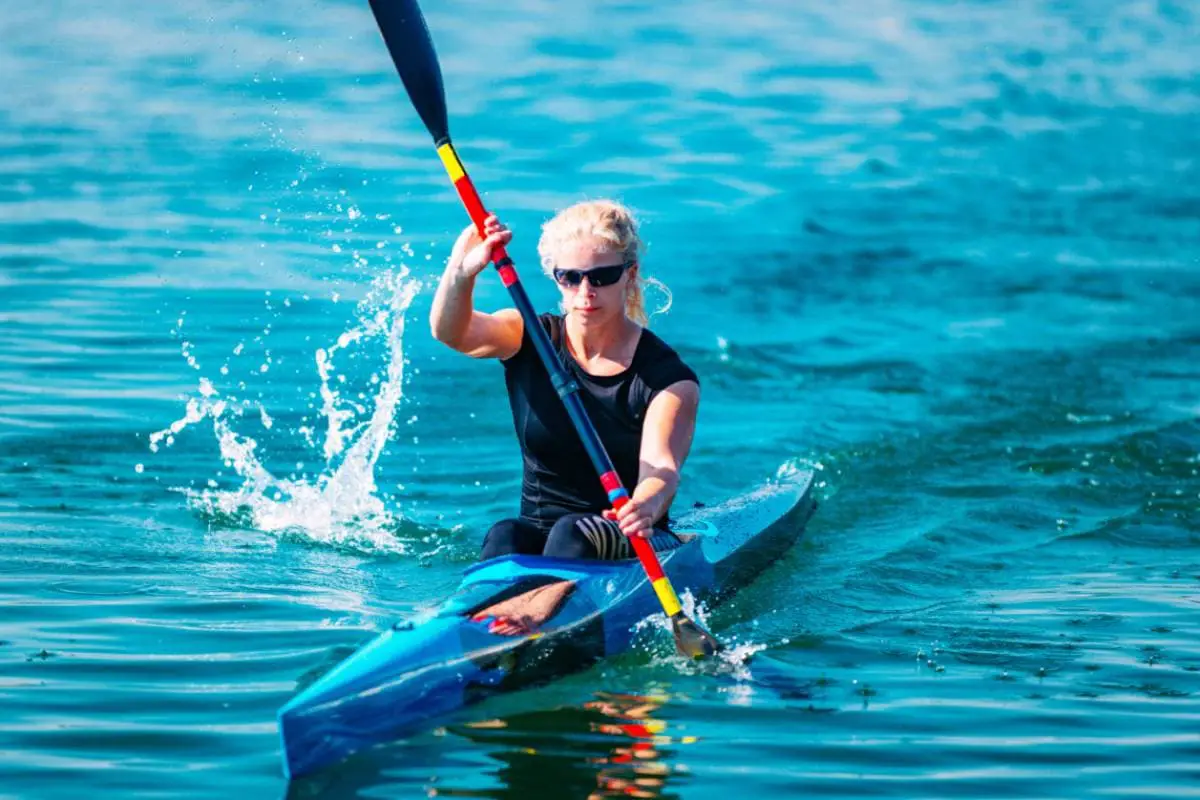
9. Get Some Yakgrips for Your Kayak Paddle
Similar to the silicone grips above, Yakgrips (Amazon) is a type of handle that has been designed to give you a more secure grip on your kayak when you are out on the water. The difference between Yakgrips and silicone grips is that Yakgrips are made of a squishy, cushioned material that is less prone to giving you blisters.
You can attach these handles into place on your paddle with ease, and they give you a more comfortable and secure grip than standard handles.
They are longer and have more padding than traditional handles, making them easier to hold onto for extended periods.
When you are out on the water, kayaking can be tiring – this is especially true if you are new to the sport and will be paddling for long periods. As a result, it is essential to invest in Yakgrips as they increase overall comfort when kayaking to reduce the chances of blisters.
Avoiding Blisters While Kayaking – Conclusion
In this article, you’ve learned how to avoid blisters kayaking. As you’ve seen, there are many different ways to reduce or eliminate blisters from forming while paddling your kayak.
The best news is that you can choose the way that works best for you, and can even combine several of the above methods to give you many hours of blister-free kayaking enjoyment.
